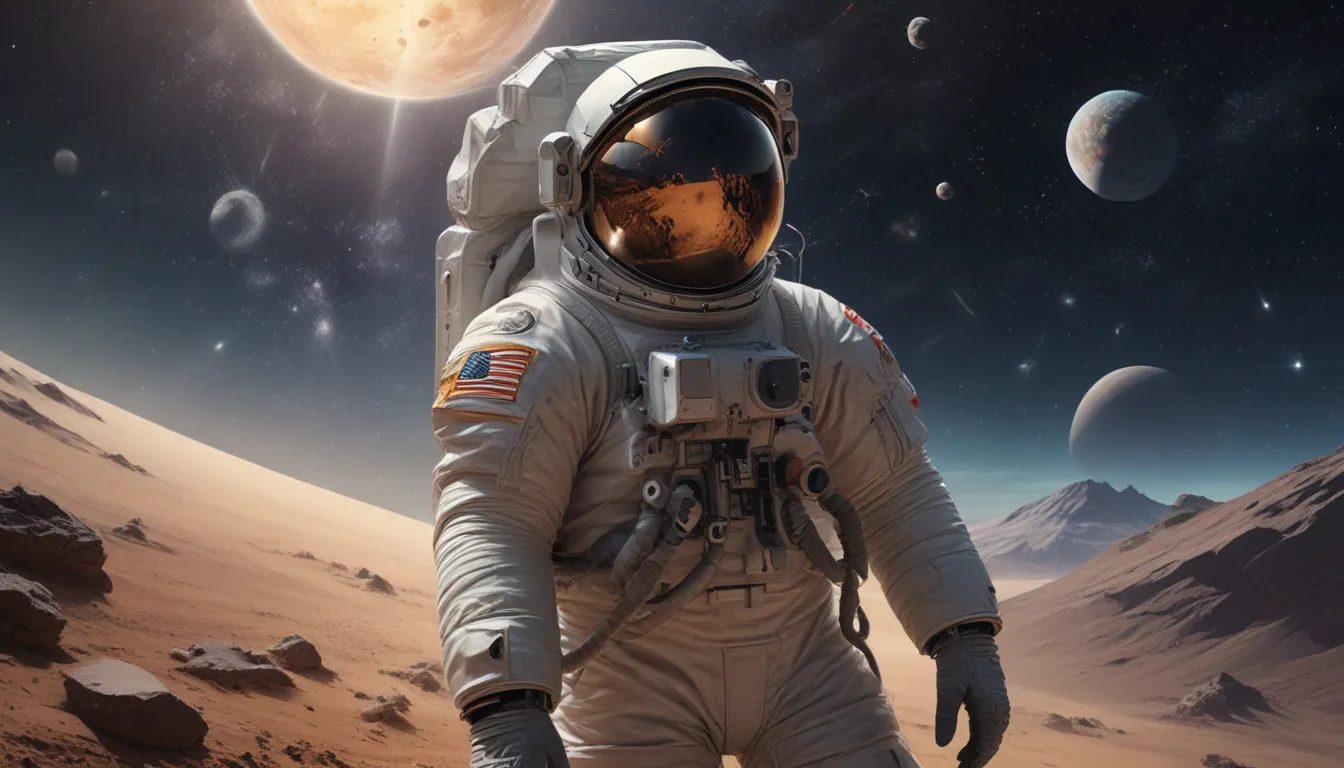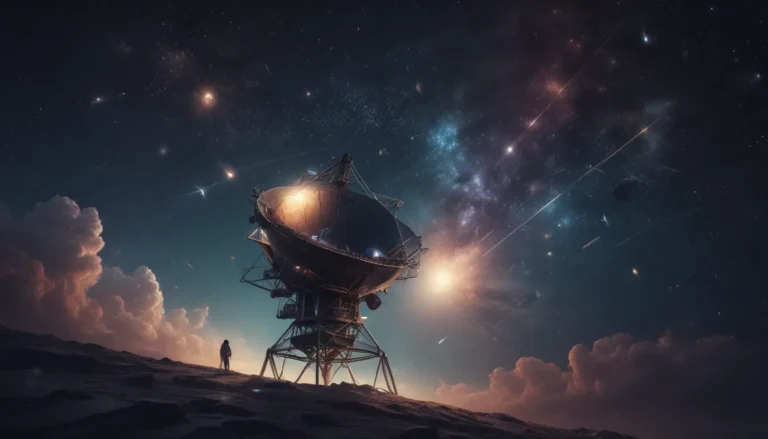The pictures we use in our articles might not show exactly what the words say. We choose these pictures to make you interested in reading more. The pictures work together with the words but don’t take their place. The words still tell you the important facts.
Are you ready to embark on a mesmerizing journey through space and uncover the intriguing facts about the extraordinary individuals who venture into the unknown? In the vast expanse of the cosmos, a special group of individuals known as cosmonauts dedicate their lives to unraveling the mysteries of the universe. These bold adventurers have captured the imagination of people worldwide with their daring exploits and remarkable accomplishments. From their rigorous training to their awe-inspiring journeys beyond Earth's atmosphere, the realm of cosmonauts is filled with captivating stories and mind-boggling facts that will spark your imagination. Join us as we delve into the world of cosmonauts and unveil 13 unbelievable facts that will deepen your appreciation for their remarkable work. So, fasten your seatbelts and get ready for an exhilarating cosmic ride as we explore the incredible universe of cosmonauts.
Unveiling the Cosmic Trailblazers:
- Cosmonauts have achieved remarkable milestones, from the first human in space to the longest single spaceflight, inspiring us to reach for the stars and push the boundaries of exploration.
- Their groundbreaking accomplishments, such as the first woman in space and the development of space cuisine, showcase the limitless possibilities of space exploration and the adventurous spirit of cosmonauts.
Yuri Gagarin’s Iconic Journey into Space:
On April 12, 1961, Yuri Gagarin etched his name in history by becoming the first human to venture into space aboard Vostok 1. This monumental feat marked a significant milestone in space exploration, forever immortalizing Gagarin as a trailblazer in the cosmos.
Valeri Polyakov’s Record-Breaking Space Odyssey:
During his 437-day mission aboard the Mir space station from 1994 to 1995, Valeri Polyakov set the record for the longest single spaceflight. His endurance and dedication in the harsh conditions of space demonstrated the resolute spirit of cosmonauts.
Alexei Leonov’s Historic Spacewalk:
On March 18, 1965, Alexei Leonov made history by becoming the first cosmonaut to perform a spacewalk. His 12-minute excursion outside the Voskhod 2 spacecraft laid the groundwork for future extravehicular activities, paving the way for celestial exploration.
The Marvel of the International Space Station:
The International Space Station (ISS) stands as the largest space station ever built, with a mass of approximately 420,000 kilograms. A collaborative effort between multiple space agencies, the ISS serves as a hub for scientific research and a dwelling place for astronauts from various nations.
Valentina Tereshkova’s Trailblazing Journey:
On June 16, 1963, Valentina Tereshkova etched her name in history as the first woman to journey into space aboard Vostok 6. Her mission heralded a new era for female cosmonauts, inspiring generations to pursue careers in space exploration.
Voskhod 1’s Pioneering Multi-person Spacecraft:
On October 12, 1964, Voskhod 1 made history as the first multi-person spacecraft to carry more than one crew member into space. Three courageous cosmonauts – Vladimir Komarov, Konstantin Feoktistov, and Boris Yegorov – successfully orbited the Earth aboard Voskhod 1.
Salyut 1: The Groundbreaking Space Station:
The Soviet Union launched the world's first space station, Salyut 1, on April 19, 1971, laying the foundation for future space station construction and operation. This pivotal achievement marked a significant step in humanity's quest for celestial exploration.
Gennady Padalka’s Staggering Space Endurance:
With a total of 878 days spent in space, Gennady Padalka holds the record for the longest cumulative time in space. His multiple missions aboard the ISS have cemented his legacy as a seasoned spacefarer.
The Extraterrestrial Hospitality Experience:
The Russian space agency Roscosmos unveiled plans to construct a luxury hotel module on the ISS, offering a unique out-of-this-world hospitality experience for space tourists. This ambitious endeavor aims to provide an unparalleled opportunity to dwell in space.
Charles Conrad Jr.’s Transcendent Space Journey:
In 1965, Charles "Pete" Conrad Jr. achieved a significant milestone by becoming the first American astronaut to reach space aboard a Russian Soyuz spacecraft during the Soyuz 21 mission. His participation marked a poignant moment in international space cooperation.
John W. Young’s Gravity-Defying Feat:
At the age of 76, the remarkable John W. Young became the oldest person to perform a spacewalk on October 12, 2008. His assistance in repairing a motorized wheel on the ISS showcased his unwavering dedication to cosmic exploration.
Guion Bluford’s Barrier-Breaking Mission:
On August 30, 1983, Guion Bluford shattered barriers as the first African-American astronaut to journey to space aboard the space shuttle Challenger. His mission inspired aspiring astronauts from diverse backgrounds to pursue their cosmic dreams.
Nourishing Innovation in Space Cuisine:
Russian cosmonauts have played a pivotal role in advancing space cuisine, developing techniques to produce nutritious and flavorful food for long-duration space missions. Their contributions ensure the well-being of astronauts during celestial expeditions.
Conclusion: Embracing the Cosmic Frontier
In conclusion, the realm of cosmonauts is a captivating realm filled with extraordinary facts and astounding achievements. From their tenacious training to their unparalleled voyages beyond Earth's confines, cosmonauts have consistently pushed the boundaries of human exploration. These intrepid individuals not only confront physical and mental challenges but also contribute significantly to scientific research and technological advancements. Their trailblazing pursuits have paved the way for numerous breakthroughs in space exploration, expanding our comprehension of the cosmos. As we continue to traverse the vast expanse of the universe, let us celebrate the remarkable feats of cosmonauts and their steadfast commitment to advancing humanity's understanding of the unknown. The discoveries made by these extraordinary individuals serve as a beacon of inspiration, urging us to dream big and aspire to reach the stars.
Cosmic FAQs:
- What is a cosmonaut?
-
A cosmonaut is a Russian astronaut who has undergone training and participated in space missions through the Russian space agency.
-
How long does it take to become a cosmonaut?
-
Becoming a cosmonaut entails years of rigorous training, including physical fitness assessments, psychological evaluations, and intensive technical education, taking around 4 to 6 years on average.
-
How many cosmonauts have been to space?
-
Since the first manned spaceflight in 1961, approximately 570 cosmonauts have ventured into space, with the number fluctuating as new missions are conducted.
-
What dangers do cosmonauts face in space?
-
Cosmonauts encounter dangers such as high levels of cosmic radiation, space debris collisions, equipment malfunctions, and the physical and psychological effects of long-duration space travel.
-
How do cosmonauts sleep in space?
-
Cosmonauts sleep in small compartments on the ISS, using specially designed sleeping bags attached to walls to prevent floating in microgravity, ensuring restful sleep.
-
Can women become cosmonauts?
-
Yes, women can become cosmonauts, with the Russian space agency having female cosmonauts who have completed space missions and contributed significantly to space exploration.
-
How do cosmonauts eat in space?
-
Cosmonauts consume specially prepared, vacuum-sealed food in space, using utensils equipped with suction cups to prevent them from floating away in microgravity.
-
How long do cosmonauts stay in space?
-
The duration of a cosmonaut's space mission varies, with typical stays lasting around six months on the ISS, though longer missions have seen cosmonauts spending over a year in space.
-
Can cosmonauts communicate with their families from space?
-
Yes, cosmonauts can communicate with their families through email, video calls, and phone calls, enabling them to stay connected while in orbit.
-
How do cosmonauts return to Earth?
- Cosmonauts return to Earth in a Soyuz spacecraft, which undergoes a re-entry process using parachutes to slow descent. Recovery teams retrieve cosmonauts once the spacecraft lands.
Unveiling the heroic missions of cosmonauts and the exceptional challenges they face in space, these astounding facts are sure to kindle your curiosity. As you delve deeper into the captivating world of space exploration, consider exploring the enthralling tales and trivia surrounding the Yuri Gagarin Stadium, named after the pioneer of human space travel. Embrace the wonders of the cosmos and let the spirit of exploration guide you to new horizons.
Your Input Matters!
Our dedication to delivering reliable and engaging content drives the heart of our mission. Each fact shared on our platform is a product of diverse insights contributed by real users like you, ensuring a wealth of accurate and authentic information. Trust in our commitment to quality and authenticity as you embark on a journey of discovery and learning with us.






